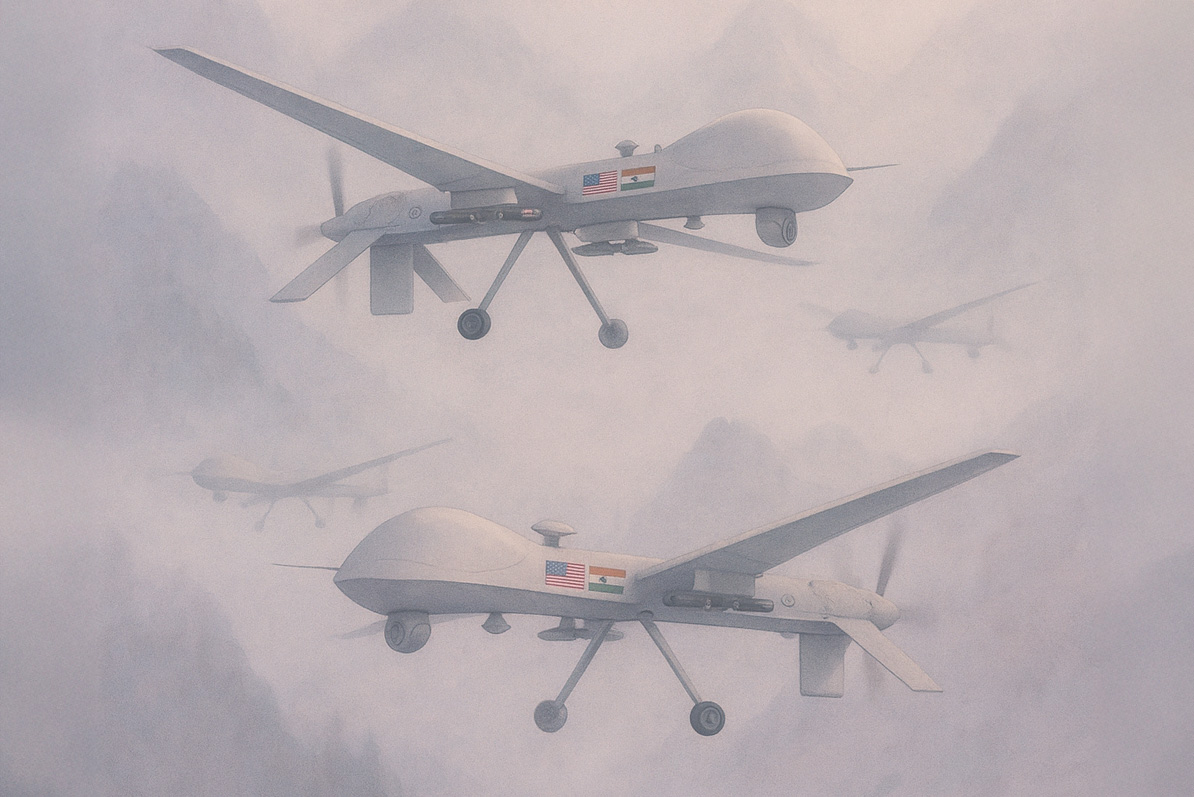A Security Nexus perspective, “From Factory to Frontline: Why U.S.–India Drone Collaboration Could Shape the Next Era of Deterrence,” by Shyam Tekwani, professor at the Daniel K. Inouye Asia-Pacific Center for Security Studies, argues that the future of deterrence in the Indo-Pacific will depend not on prestige platforms, but on scalable, attritable defense systems co-developed by the United States and India.
The article highlights that traditional assets—such as aircraft carriers and stealth fighters—are becoming too slow, costly, and vulnerable to serve as the foundation of modern deterrence. Drawing lessons from the Ukraine conflict, Tekwani emphasizes the impact of unmanned aerial vehicles, electronic warfare units, and mass-manufactured, low-cost systems. These platforms create uncertainty for adversaries and can be deployed in high volumes, offering both presence and flexibility without escalating tensions.
Tekwani points out institutional and cultural barriers to innovation in both countries, including bureaucratic inertia and a preference for high-profile systems. He proposes a path forward: leveraging modular design, strengthening mineral security supply chains, and building a Mass Systems Corridor to accelerate the joint development and production of unmanned systems. Initiatives such as bilateral design challenges, integrated mineral-to-platform strategies, and joint field testing can bridge gaps and speed up deployment.
The perspective concludes that scalable co-production is essential for credible, distributed deterrence in the Indo-Pacific. By embracing mass-capable systems, the United States and India can build a resilient security architecture—one that adapts to regional complexity and keeps pace with technological change. This model offers a new foundation for deterrence: affordable, agile, and built for tomorrow’s contested environments.
Security Nexus Perspective: https://dkiapcss.edu/nexus_articles/from-factory-to-frontline-why-u-s-india-drone-collaboration-could-shape-the-next-era-of-deterrence/
The views expressed in this article are those of the author and do not reflect the official policy or position of DKI APCSS, the Department of Defense, or the U.S. Government. The appearance of external hyperlinks does not constitute endorsement by the United States Department of Defense (DoD) of the linked websites, or the information, products, or services contained therein. DoD does not exercise any editorial, security, or other control over the information you may find at these sites.










Leave A Comment